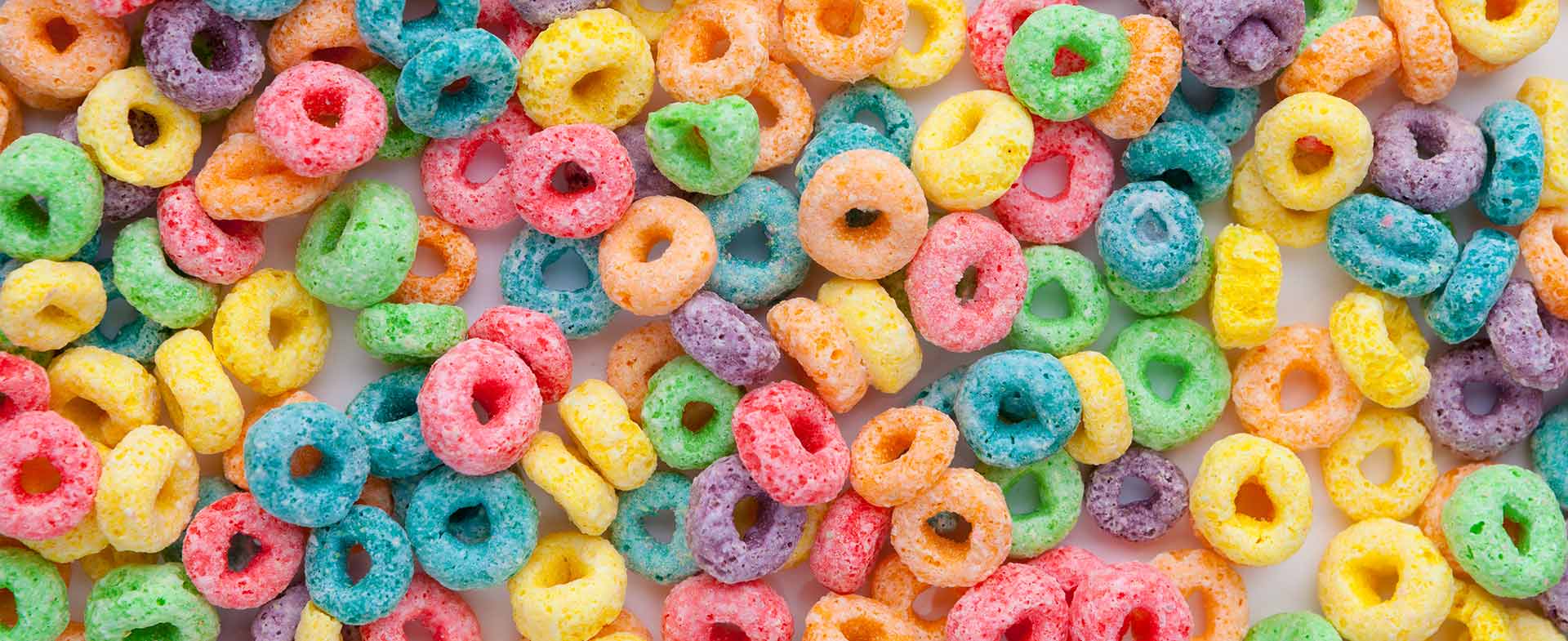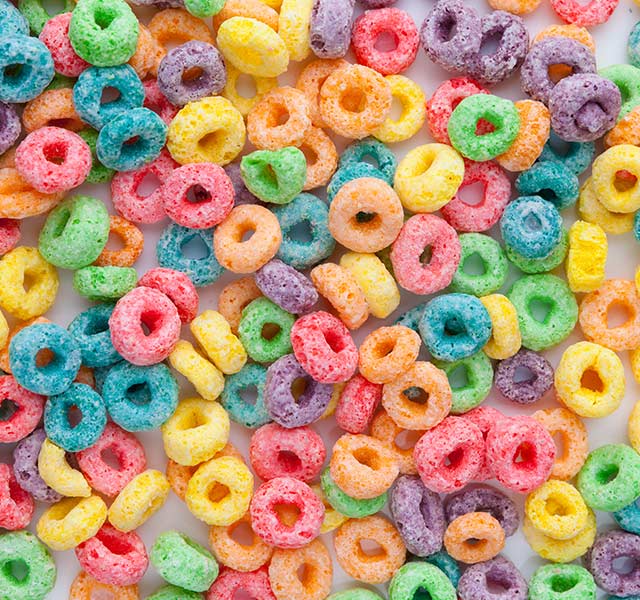Chefs have an old saying: You eat with your eyes first. After all, there’s a reason that donuts are adorned with brightly colored sprinkles and the cereal aisle has offerings in every hue of the rainbow.
Synthetic (human-made) dyes exist only to add color to products like foods, drinks and even medicines. The dyes don’t help preserve foods, and they have no nutritional benefit.
Increasingly, though, consumers are growing suspicious of the artificial dyes used to give food products those appealing colors. Research has suggested dyes are linked to health problems, including behavioral changes in children. Because of this, the U.S. Food and Drug Administration (FDA) recently issued a nationwide ban on one colorant, Red No. 3. And, in the fall of 2024, California passed legislation banning six artificial food dyes from all foods served and sold in the state’s public schools. Other states followed with similar bills.
“There are a number of concerns about artificial food dyes used in foods in the U.S.,” says Halle Saperstein, R.D., a clinical dietitian at Henry Ford Health. “Research is still being done, but I think it’s important for consumers to be informed.”
Here, Saperstein discusses what’s known so far.
Food Coloring Risks
Artificial dyes have been linked to a number of possible health problems including:

Meet With A Dietitian
- Allergies
- Cancer
- Inflammation of the colon and colorectal health problems
- DNA damage
- Behavioral changes
Food Dyes and ADHD
Behavioral changes that food dyes may contribute to include:
- Hyperactivity
- Irritability
- Memory problems
- Restlessness
- Volatile moods
A review of the existing research, published in 2022, found evidence from both animal and human studies that suggested artificial food dyes can affect behavior in children. Experts say there’s no evidence that food dye causes ADHD. However, it can cause hyperactivity and might make ADHD symptoms worse. Unfortunately, bright-colored foods like candy and fruit drinks are often marketed toward children, Saperstein points out.
“The studies suggest that these reactions can occur within hours of consuming artificial dye, but it’s not always immediate. Sometimes symptoms take a day or two to show up,” Saperstein says. “There’s also research that shows when you remove dye from a child’s diet, they have fewer symptoms like restlessness or hyperactivity.”
How to Limit Food Dyes
Unfortunately, giving up dye completely is probably hard to do, unless you swear off candy and cook all your food from scratch. Still, it’s possible to cut way back on the amount of dye you and your children consume. Here are some ways to start:
- Pay attention. “I think the most important thing you can do is to stay informed,” Saperstein says. States are introducing new bills to limit dyes, and activists are putting pressure on the FDA and food companies. If this issue is important to you, read up—and consider writing to lawmakers.
- Read labels. Food dyes can be hidden in places you wouldn’t expect. Some sandwich breads, for example, are artificially colored with a caramel color to make them appear “healthier.” Fortunately, food dyes are listed in the ingredient list on food labels. The names usually include a color (like “Red No. 3” or “Yellow No. 5”), which makes them easy to spot—as long as you check the fine print. Sometimes, though, they may be listed by their chemical names, such as tartrazine (another name for Yellow No. 5).
- Rethink packaged foods. Avoid ultra-processed foods like store-bought cookies, crackers and soda. Not only are they more likely to contain artificial dyes, they also tend to be high in sugar and low on nutrition.
- Look for alternatives. More companies are starting to swap artificial dyes for natural colorants, like beet juice or turmeric. It’s often just a matter of reading labels and seeking them out. “There are more and more options available at our fingertips,” Saperstein says. “Luckily, the internet makes it easy to do your research before you even go to the store.”
- Get creative. When baking at home, skip the food coloring and colored sprinkles, and add fruit or nuts for color and crunch.
- Buy organic oranges. Weird as it sounds, some orange peels are dyed to give them that bright traffic-cone hue. But oranges certified organic have to be dye-free.
- Don’t avoid colors. Naturally colorful foods, like fruits and vegetables, are rich in antioxidants. Keep your plate vibrant with foods like red and yellow bell peppers, blueberries and blackberries.
Thanks to new legislation and increased pushback from consumers, the landscape for artificial dyes is changing quickly. With Red No. 3, for example, manufacturers need to reformulate their products by January 2027.
In the meantime, Saperstein says, you can make informed decisions by reading labels. “It’s a personal choice, but if you want to avoid artificial dyes, there are ways to navigate that,” she says.
Reviewed by Halle Saperstein, R.D., a clinical dietitian at Henry Ford Health.



